Back in 2009, in the middle of an Australian summer, I was contracted by the NSW Office of Rail Heritage (ORH), to assess their Small Movable Heritage Collection, then housed in an original carriage works building in Eveleigh, Sydney. The project was to undertake a full survey of the collection in order to clean and conserve a selection of objects for inclusion in the soon-to-be-opened Trainworks Museum in Thirlmere, NSW. The collection of around 3,000 mixed media objects was comprised of rail artefacts and machinery, signs, furniture, framed artworks, books, photographs, scientific and surveying equipment and uniforms. On first inspection of the site it was apparent that the environmental conditions of the store were far from favourable. Apart from generating a ‘greenhouse’ effect, with initial temperature measuring 36oC and relative humidity at 98%, the glass roof was badly deteriorated with missing and broken panes letting in not only rain, and dirt from the adjacent railway, but also several species of rodents and birds, who had clearly made this their home, and latrine!
The evidence was everywhere with extensive dirt, excreta and mould growth over the entire collection.
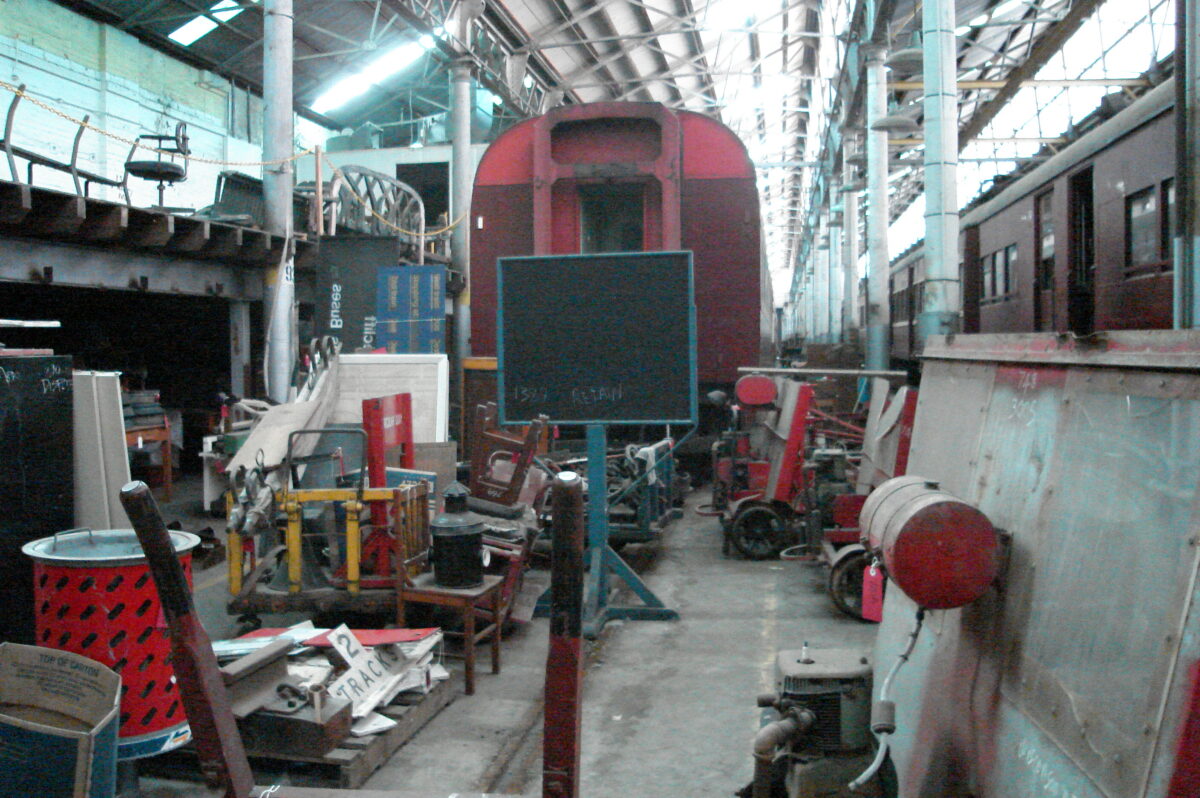
Rail Corp Small Object Collection Carriage works 2009. Image credit: Tess Evans.
Instant concerns were raised as to the potential health hazards of handling the collection given the scale and type of contamination, and the possible presence of not only various species of harmful fungi and potentially fatal fungal diseases such as histoplasmosis and hantavirus pulmonary syndrome (HPS) being carried in the bird and animal droppings, but also the vast range and condition of objects and materials requiring treatment.
After consultation with conservation colleagues, it was confirmed that the industry standard non-toxic methods of dealing with fungal-infected heritage collections were generally to:
- isolate infected objects
- irradiate infected objects
- surface clean using a brush and vacuum extraction, fitted with a HEPA filter
or
- surface clean with 70% ethyl alcohol.
Through further literature research, I discovered that most other treatments used historically on cultural heritage were either highly toxic, potentially damaging to some of the artefacts or, given that it was not possible to rectify the environmental conditions, would not effectively kill spores, leaving the objects vulnerable to further mould growth.
All of these were considered to be either impractical, unacceptable or insufficient given the extent of the contamination, the size and composition of many of the objects and the location. This prompted research into a suitable alternative.
Research commenced to find a disinfectant cleaning solution that was effective against the fungal strains present, non-toxic, both physically and economically practical and caused no adverse effects across a wide spectrum of materials.
After much investigation, I came across a product that was in the process of being tested by independent government-approved laboratories and trialled by the National Health Service in the UK as a general surface-cleaning agent for the health industry.
The product, called Steri 7® was advertised as a water-dispersed, high level, broad-spectrum biocide, made for use as a surface steriliser. From its technical information, Steri 7® was reported to be ‘highly effective against bacteria, viruses, spores, fungi and mould’ and ‘to kill many of the most dangerous microorganisms including superbugs and pathogens such as Norovirus, Sars, E. Coli, Salmonella, Listeria, Legionella and other fungal, bacterial and viral diseases, whilst being harmless to other organisms’ plus, due to its patented ‘Residual Barrier Technologyâ’, provided further protection against subsequent contamination and re-colonisation. This looked promising …
With approval from the ORH we began the cleaning process and although laborious we had great results.
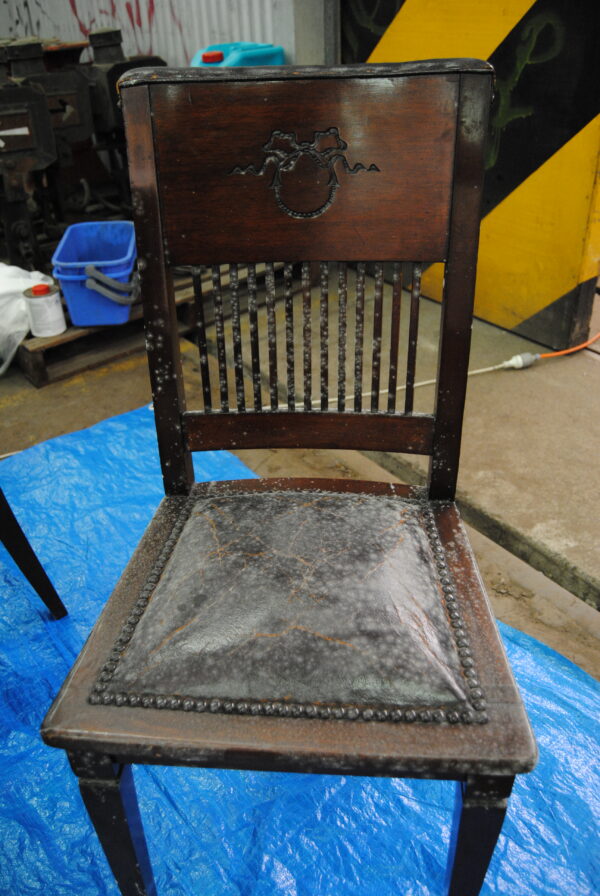
State Governors Carriage Chair before treatment. Image credit: Tess Evans.
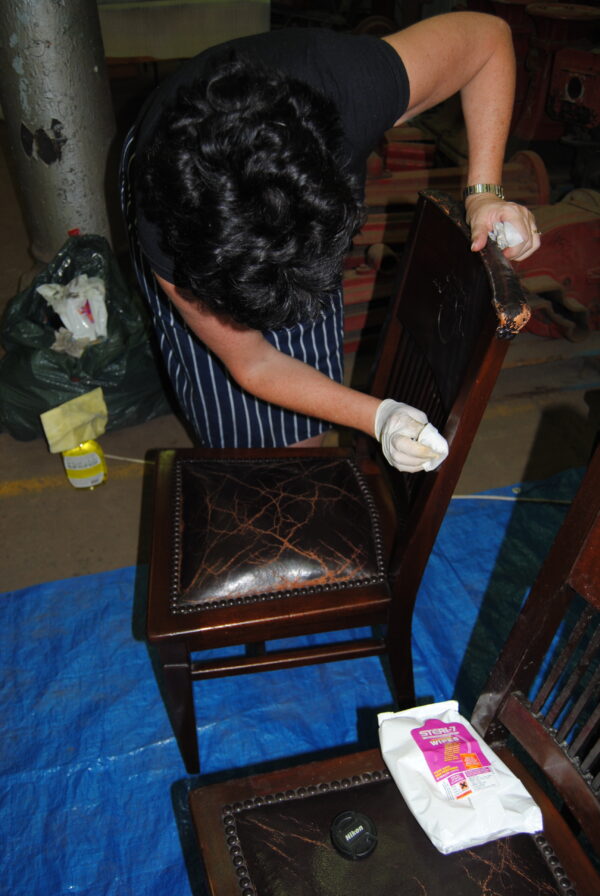
In progress cleaning. Image credit: Tess Evans.
After two years of sampling, testing and cleaning both here and in the UK, whilst on sabbatical, culminating in an MSc in Museum Studies with my dissertation entitled ‘Breaking the Mould’, Steri 7® had become a regular treatment for mould remediation within my conservation practice.
The initial Steri 7® product was principally created as a surface sanitiser and was said to be 99.9999% effective at killing ‘The Top 7’ pathogens commonly found. General purpose Steri 7® was available in a ready-to-use spray, an impregnated cotton fibre wipe, a foam dispenser and a concentrate (that could be diluted with water to the desired concentration).
So I began working with the manufacturer to create a range that would be suitable for a wide range of potentially degraded material surfaces and investigated other methods of application.
Fast track to last year when once again I was called to the rescue of three significant heritage rail carriages, housed in less-than-ideal conditions. The mould was extensive and in every nook and cranny! This required a different approach to effectively treat but speed up the process and a misting technique used by pest companies to disperse product into hard-to-reach areas was developed.
Armed with a new Steri 7® formula, buffered to near neutral pH specifically for mould remediation and called MKP (Mould, Kill, Protect), I went into battle …

Heritage carriage AAH9 – Misting with MKP. Image credit: Tess Evans.
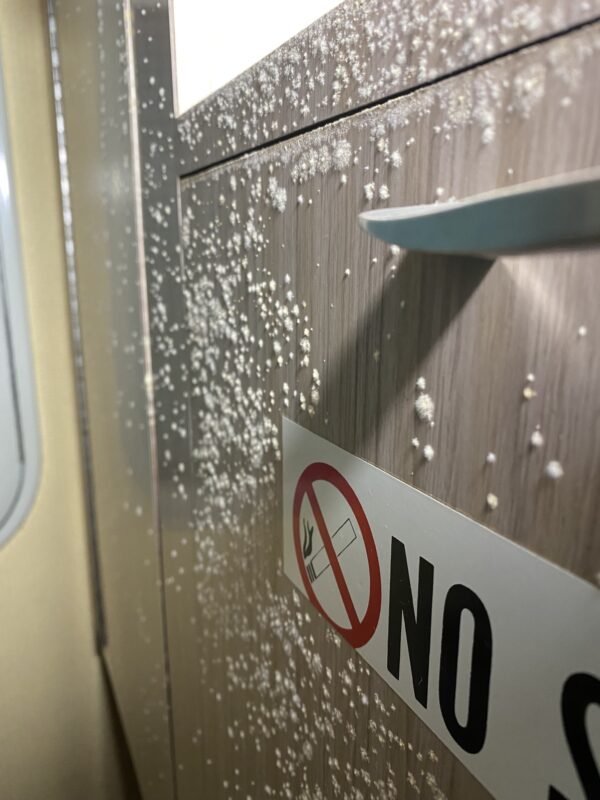
Heritage carriage AAH 9 – Before treatment. Image credit: Tess Evans.
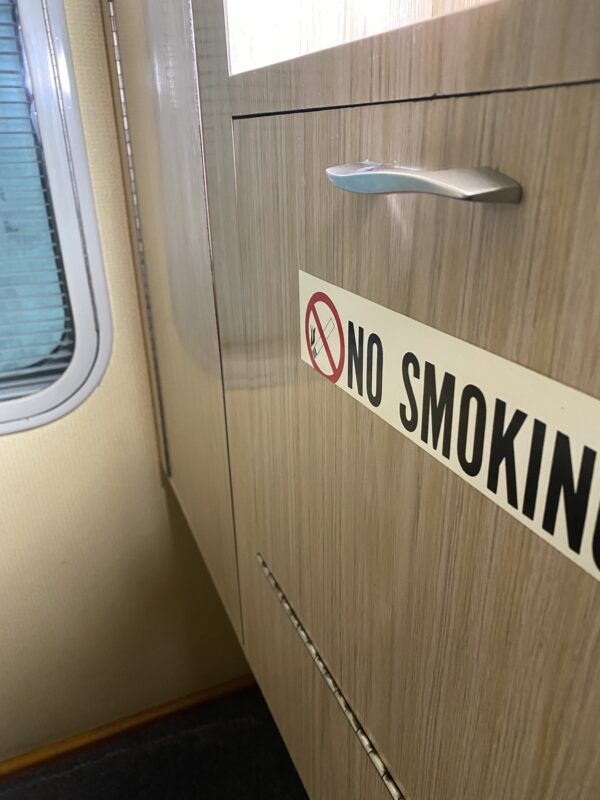
Heritage carriage AAH 9 –After treatment. Image credit: Tess Evans
Eighteen months on and the results are very positive with only minimal mould regrowth occurring within the carriages.
After nearly 15 years of research and development I really believe that this product would be extremely valuable to the heritage and museum community. In 2024 I hope to run a mould remediation workshop, but in the meantime if anyone is interested in knowing more, trialling a sample or undertaking further testing, please reach out to me.